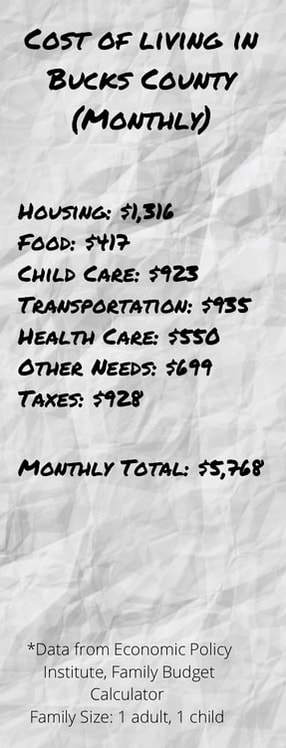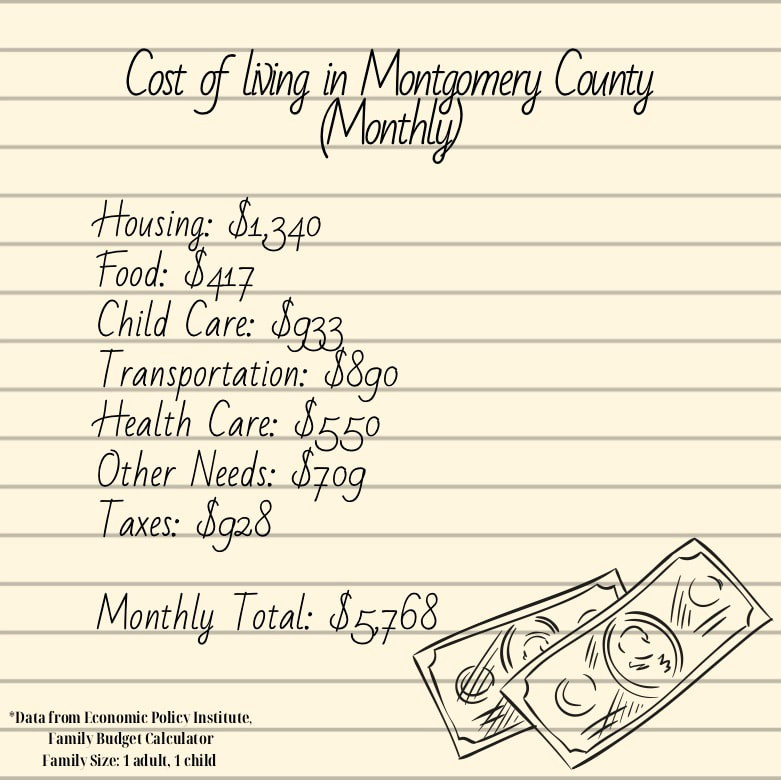|
On March 27, the federal government passed a stimulus package, allotting $1200 to every individual making less than $75,000 annually and couples making less than $150,000 annually. Parents/guardians will receive an additional $500 for every child 16 or younger. Direct deposit payments went out on April 15, with paper checks expected to follow in the weeks after.
The payments are meant to encourage activity within the economy, whether that means paying bills or making an impromptu purchase (online). But for people struggling to make ends meet, whether they’re out of work, facing reduced hours or just not getting paid enough, $1200 won’t go very far. In fact according to data from the Bureau of Labor Statistics, $1200 will cover less than two weeks’ expenses for most Americans (Check out the graphics below to find out just how much it costs to live in Bucks and Montgomery Counties monthly). And those two weeks don’t take into account the added costs that have come with stay at home orders. Even as hours, wages and job stability have gone down, living expenses are going up. Here’s how:
This doesn’t mean that the stimulus payments don’t help at all. They do. However, they aren’t a cure-all. We encourage you to look for additional ways to help your neighbors and community at this time, while remaining physically distant. And if you need help, ask. We’re here for you, too.
0 Comments
Leave a Reply. |
Categories
All
Archives
July 2024
|
|
1097 Street Road
New Hope, PA 18938 |



 RSS Feed
RSS Feed
